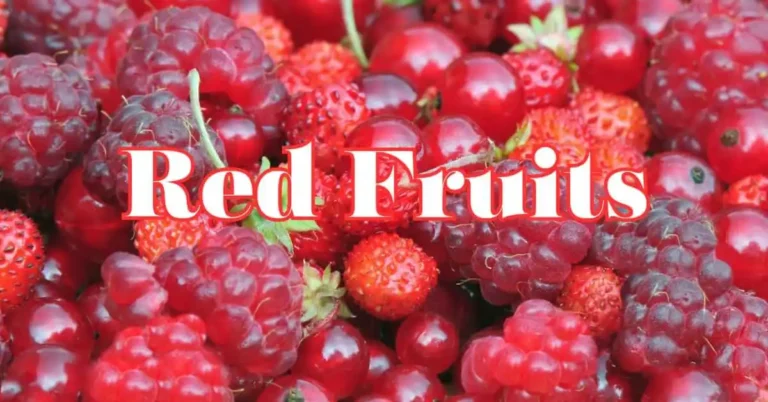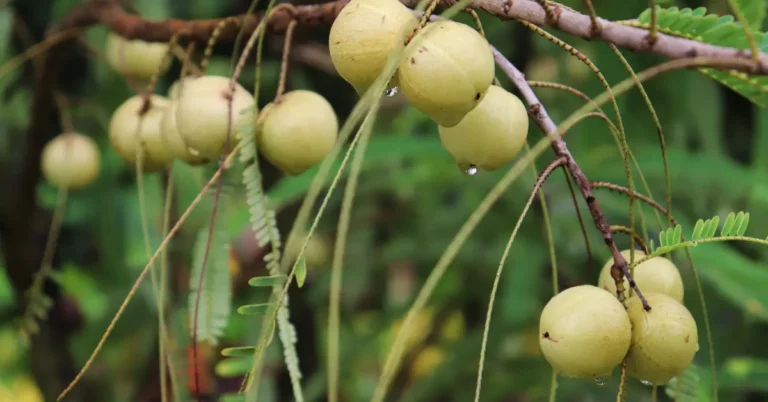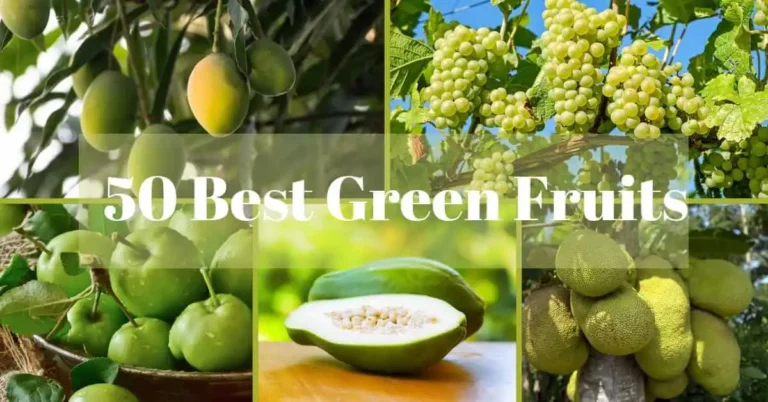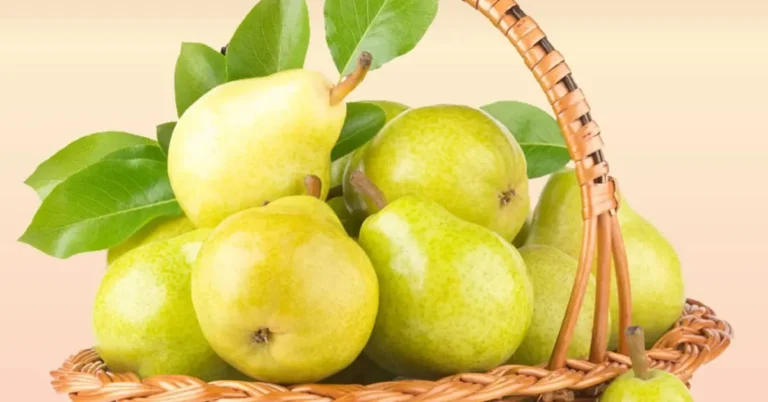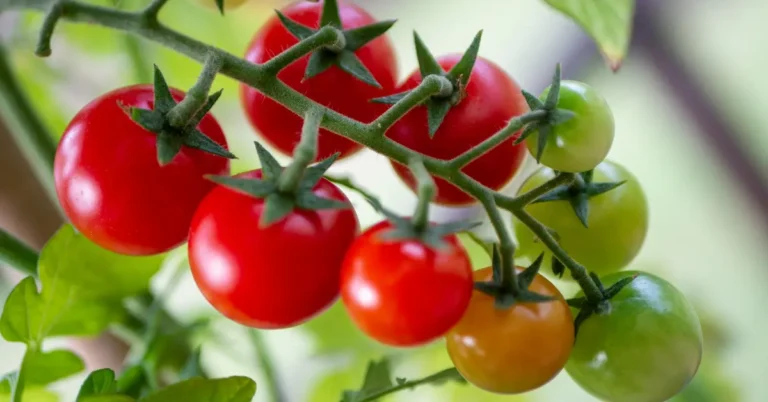Healthy and Delicious Peach-colored Fruits
The peach-colored fruits aren’t just beautiful; they’re delicious and packed with nutrients. From the succulent peach to the vibrant apricot and the smooth-skinned nectarine, those fruits add color and taste to our tables. This article explores their dietary benefits, distinct varieties, culinary uses, and plenty more.
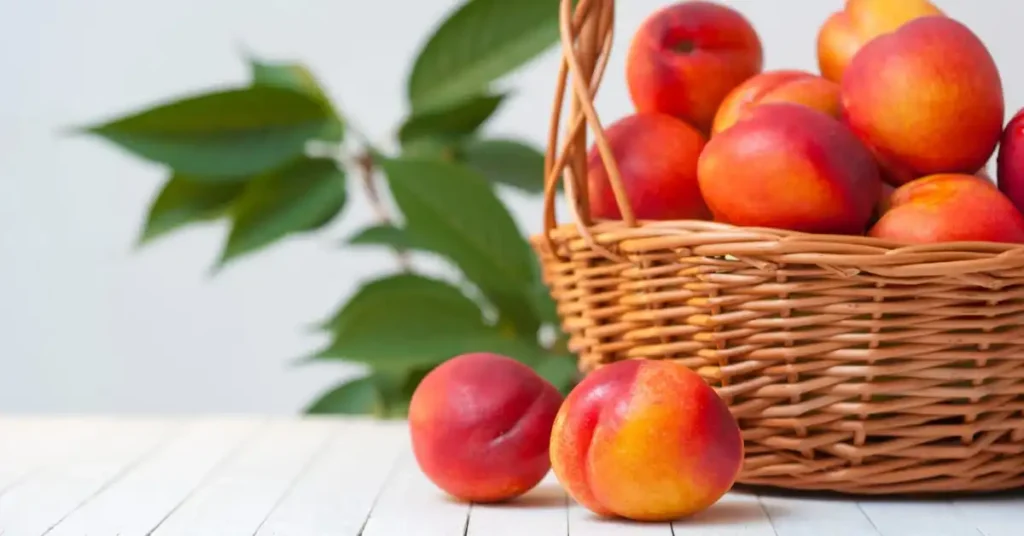
Nutritional value
1. Rich in antioxidants:
Peach-colored fruits are renowned for their antioxidant content, which fights oxidative stress in the body. Antioxidants neutralize free radicals, contributing to general well-being.
2. High Vitamin Content
From vitamin C to beta-carotene, these fruits are full of essential vitamins. Vitamin C supports the immune system, while beta-carotene promotes eye health and radiant skin.
3. Dietary Fiber for Digestive Health
The dietary fiber found in these fruits aids digestion, promoting a healthy gut and preventing constipation. Including these fruits in your weight-reduction plan can contribute to a well-functioning digestive system.
4. Hydration and Detoxification:
With their high water content, peach-colored fruits contribute to hydration, while their natural sweetness can satisfy sugar cravings more healthily. Additionally, fiber aids in detoxification by promoting regular bowel movements.
Different Peach-Colored Fruit Varieties:
1. Persimmons:
Persimmons, with their smooth texture and sweet flavor, are delightful additions to any fruit basket. The flavor of persimmons can vary, but it is generally sweet, sometimes with a hint of honey or spice. Persimmons are a good source of vitamin A, C, and some B vitamins. Persimmons can be eaten fresh, sliced in salads, or used in baking and cooking. They are often added to desserts, like puddings and cakes, and can be dried to make a snack known as dried persimmons.
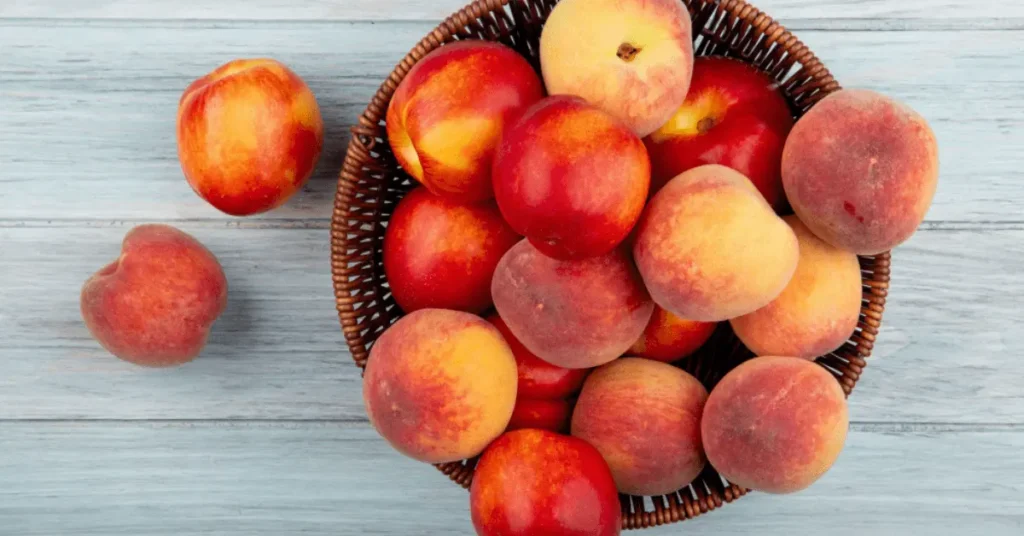
2. Apricots:
Apricots, with their velvety skin and juicy flesh, are summer favorites. Apricots are rich in vitamins A, C, potassium, and dietary fiber. They also contain antioxidants like beta-carotene.
Apricots can be enjoyed fresh, dried (often dried to make a popular snack), or used in various culinary applications.
They are used in jams, preserves, and desserts and can be added to salads or savory dishes for sweetness.
3. Nectarines:
Nectarines appear similar to peaches but have smooth skin instead of fuzzy ones. Nectarines have sweet and juicy flesh with a flavor combining sweetness and a slight tanginess. The texture is smooth, and the flesh can be white or yellow.
Nectarines are a good source of vitamins, particularly vitamin C and vitamin A. They also provide dietary fiber and antioxidants.
Cultivation and harvesting:
Those fruits that grace our tables must pass through a meticulous cultivation process. Ideal conditions should include lots of sunlight and well-drained soil. Peach trees, in particular, thrive in hot climates. Harvesting is an art because fruits must be picked at the peak of ripeness for the best taste and texture.
Peach-colored fruit recipes:
Peach-colored fruits shine in the kitchen. Those fruits lend themselves to culinary creations, whether it is a traditional peach cobbler, a jar of self-made apricot jam, or a fresh nectarine salsa. Their herbal sweetness provides a lovely touch to each sweet and savory dish.
You can find recipes with peach-colored fruits in this graph:
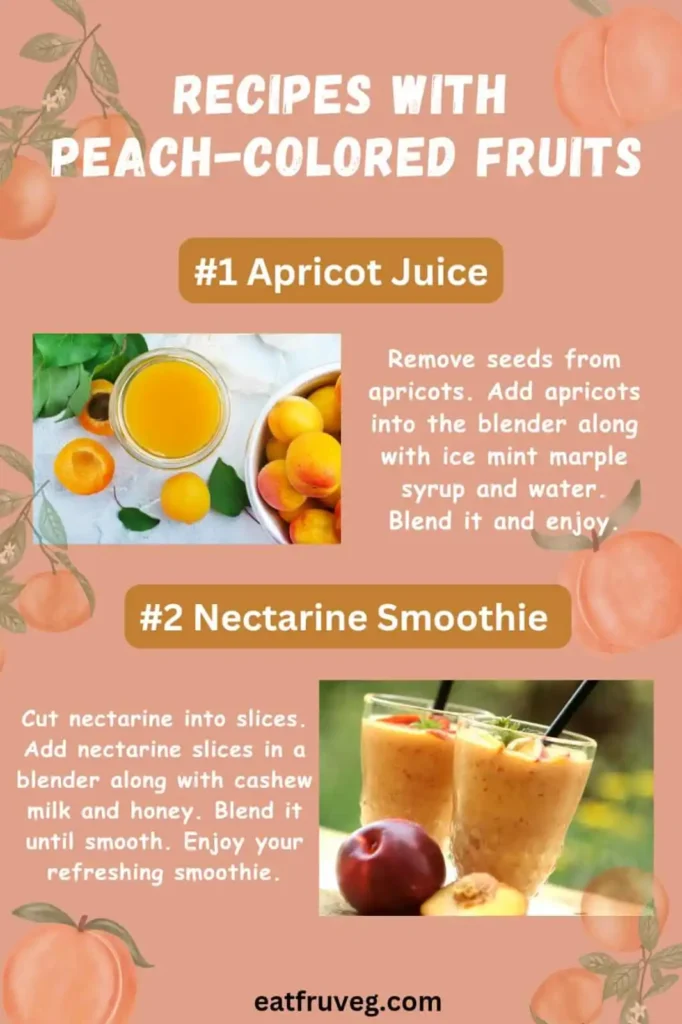
Culinary Uses :
1. Fresh and Simple:
Enjoy peach-colored fruits in their purest form by biting into a juicy peach, slicing a ripe nectarine, or indulging in the velvety texture of an apricot. The natural sweetness makes them a delightful snack that requires minimal preparation.
2. Fruit Salads:
Combine a variety of peach-colored fruits to create vibrant and refreshing fruit salads. Add a splash of citrus juice or a drizzle of honey to enhance the flavors. Mint leaves can provide a fragrant and complementary touch.
3. Grilled Goodness:
Elevate the flavor profile of peach-colored fruits by grilling them. The heat caramelizes the natural sugars, creating a deliciously smoky taste. Serve grilled peaches or nectarines as a side dish or a topping for desserts like ice cream or yogurt.
Culinary Tips:
1. Ripeness Matters:
Choose ripe and fragrant fruits for the best flavor. A gentle squeeze should yield slightly to pressure, indicating juiciness. The aroma should be sweet and enticing.
2. Pit Removal:
When working with peaches and nectarines, quickly remove the pits by slicing the fruit along the natural indentation and twisting the halves. Plums and apricots can be cut along their seams, and the holes will pop out easily.
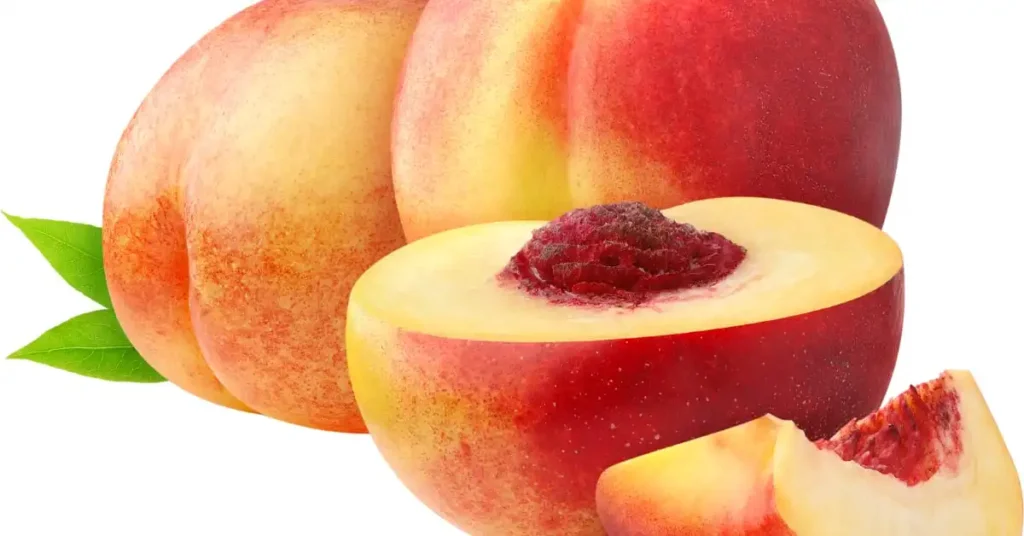
3. Grilling Techniques:
Preheat the grill to medium-high heat for optimal caramelization. Brush the cut sides of peaches and nectarines with oil to prevent sticking. Grill for a few minutes on each side until grill marks appear.
4. Balance flavors:
When using peach-colored fruits in savory dishes, consider balancing their sweetness with acidic or tangy components. Balsamic vinegar, goat cheese, and herbs like basil or thyme can complement their flavors.
5. Creative Combinations:
Feel free to experiment with unique combinations. Pair peach-colored fruits with ingredients like prosciutto, feta cheese, or arugula for a surprising and delicious twist.
6. Storage:
Store ripe peach-colored fruits in the refrigerator to extend their freshness. If you have excess ripe fruits, consider freezing them for later use in smoothies or desserts.
Health impact:
1. Boosting Immune System
Peach-colored fruits contain vitamins and antioxidants that boost the immune system. Regular intake can contribute to a more vigorous defense against illnesses.
2. Supporting Eye Health
Beta-carotene, found abundantly in those fruits, is vital for vision. Including these fruits in your weight-reduction plan supports eye health and decreases age-related macular degeneration.
3. Promoting Skin Radiance:
The combination of vitamins A and C in those fruits promotes skin fitness, contributing to a radiant and younger complexion. The antioxidants can fight skin-negative free radicals.
4. Weight Management:
For those conscious of their weight, peach-colored fruits make an excellent addition to a balanced diet. Their excessive water and fiber content contributes to a feeling of fullness, promoting satiety and potentially aiding in weight management. Enjoying these fruits as snacks or incorporating them into meals can be a flavorful and satisfying way to maintain a healthy weight.
Peach-colored fruits in Cultural Cuisine:
Traditional dishes:
Explore a variety of dishes from various cultures that feature peach-colored fruits. From Asian desserts to Mediterranean delicacies, those fruits add a unique taste to global cuisines.
Symbolism in Different Cultures :
In some cultures, these fruits symbolize prosperity, fertility, or good fortune. Understanding cultural importance adds appreciation to those fruits.
Buying and Storing Tips:
1. Selecting Ripe Fruits :
When purchasing peach-colored fruits, look for vibrant colors, mild softness, and sweet aroma. These signs ensure that the fruits are ripe and ready to eat.
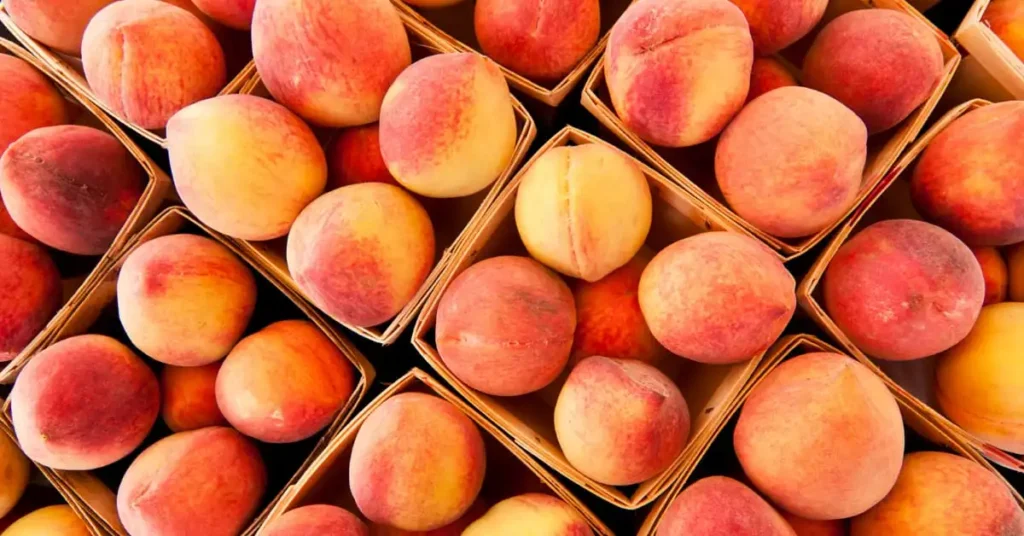
2. Proper storage techniques:
To expand fruits’ shelf life, keep them in a cool, dry place or the refrigerator. It is essential to store them properly to preserve their taste and texture.
Best Times to Enjoy Peach-Colored Fruits:
While some fruits are available year-round, others have particular seasons. Knowing the correct times to enjoy fruits ensures optimal flavor and freshness.
Fresh vs. Frozen options:
During the off-season, frozen peach-colored fruits are a convenient and nutritious alternative. They retain their nutritional value and may be utilized in various culinary creations.
Conclusion:
In conclusion, peach-colored fruits bring a symphony of flavor, nutrition, and cultural significance to our lives. Those fruits have timeless appeal whether you enjoy them fresh, cooked, or creatively. Embrace the variety, enjoy the taste, and let the vibrant hues brighten your culinary journey.

